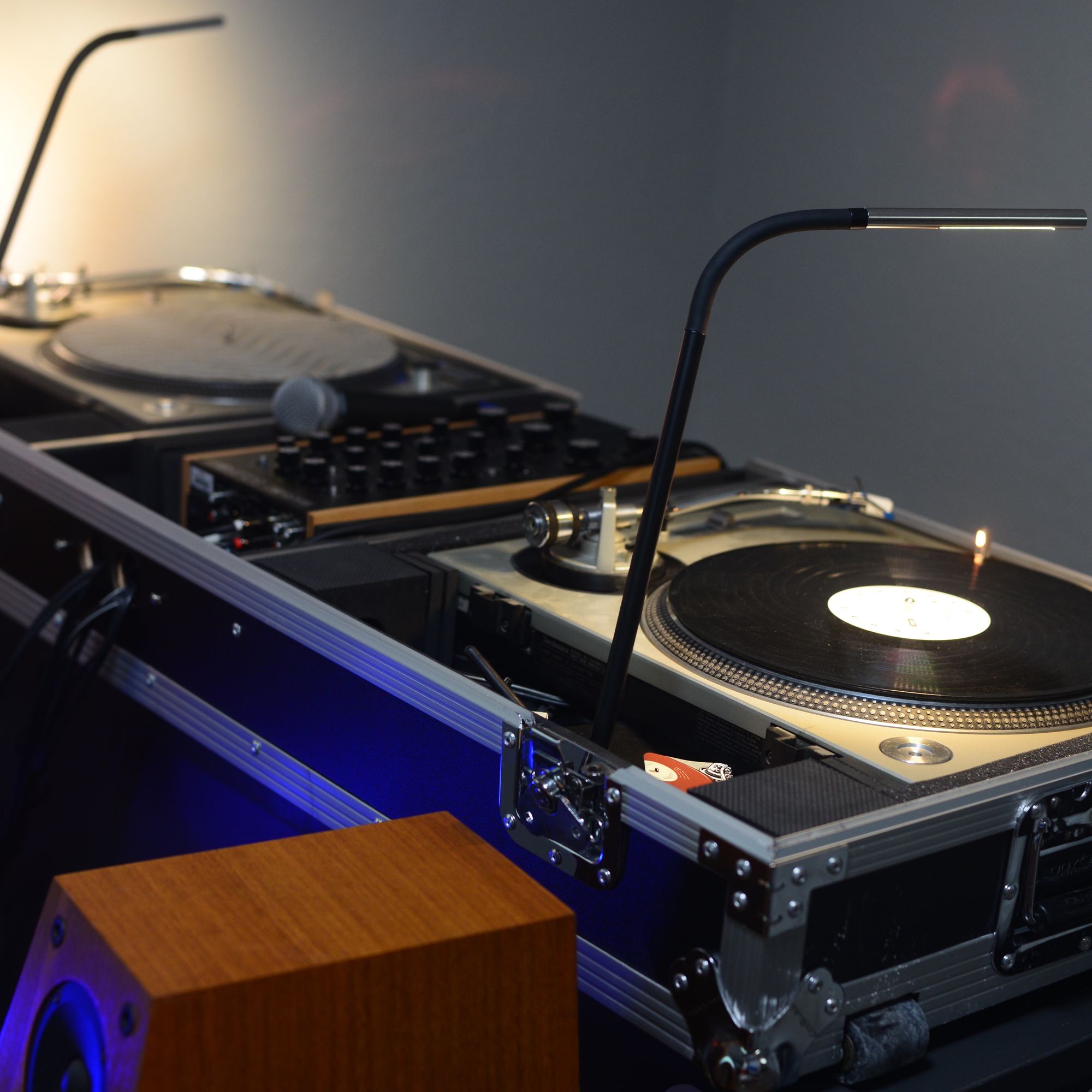It took a bit of work to setup my vinyl streaming rig, so decided to take a few minutes to document
My configuration consists of:
- 2 Technics 1200MK2 turntables
- Ecler WARM 2 mixer
- Focusrite Scarlett 4i4 audio interface
- Panasonic G85 camera
- video capture board
- MacBook Pro
- Ecamm Live streaming software
Odds and Ends
- micro-HDMI to HDMI cable
- USB to USB-C Adapter
- 1/4" jack to RCA adapters
- AC adapter for G85
- RCA patch cables
Audio Setup
The Technics 1200MK2 turntables are the standard for DJ turntables, and there isn't much to add here other than I have a nice restored set. I think it is worthwhile to use a better cartridge. I have noticed lower end DJ carts (like the Audio Technica AT-XP3) are good for practice, but don't resolve as well (especially at higher frequencies) as higher-end carts like the Shure Whitelabel cartridges I am using. The Shure Whitelabels are based on the Shure v15, and while they use a lower tracking force than most DJ cartridges, the work great for selecting and mixing house. Unless you are doing a lot of scratching, I would recommend HiFi oriented carts over DJ carts.
I'm also using Ecler WARM 2 analogy rotary mixer. The phono section sounds surprisingly good for compared to other common mixers including the Pioneer that I was using previously. The Ecler has "record out" jacks which can be inputed directly to the Scarlett 4i4 audio interface.
The audio interface basically converts analog output from the mixer, into a digital signal that can be recorded on the Mac. Other mixers, like my Pioneer, may have USB out which would allow you to by-pass the audio interface, but fully analog mixers like the Ecler require audio interface to record the output from the mixer.
One problem is I don't seem to get enough gain from the line-in inputs and there are no gain controls for those inputs. For my next session I will try the instrament inputs which do have gain controls.
Video Setup
I'm using a Panasonic G85 camera to capture video, primarily because that's what I had, but micro 4/3 cameras do well as video cameras, so it isn't a bad option. I would recommend a wide-angle lens. I made the mistake of purchasing a common 25mm prime lens which isn't wide enough to capture the decks close-up. I am now experimenting with the 12-60mm kit lens at 12mm. If that isn't bright and/or wide enough, I may invest in a 9mm prime lens, but those are around $500.
You do need a video capture "board" which is basically a USB dongle. I bought a generic one from Amazon, and it seemed to do the trick. I just connect from the HDMI out on the camera, to the capture board, and then a USB to USB-c adapter and then, plug that all into my Macbook Pro.
Software Setup
Ironically, considering I am a software engineer, I struggled the most setting up the software. First my Mac wouldn't recognize the Scarlet audio interface. I updated MacOS to the latest version and that seemed to solve the issue. Second I couldn't get the built in YouTube streaming software to work, and eventually decided to license Ecamm. Maybe there was a bug, because I was eventually able to stream directly from YouTube, but Ecamm offers a nice interface and features like multiple scenes if you have two or more cameras. It is pretty easy to setup and allows you to view your recording levels as well.
If you want to monitor comments while streaming live, you have to bring up YouTube's studio application which is quite a bit delayed from real time. It is kind of a pain to have all these apps open at the same time, but it works.
Conclusion
Overall it takes some tweaking, but I've gotten good results from this setup. I'd consider using YouTube's built in streaming options first, and if that doesn't work, you can try external software like ECamm.
